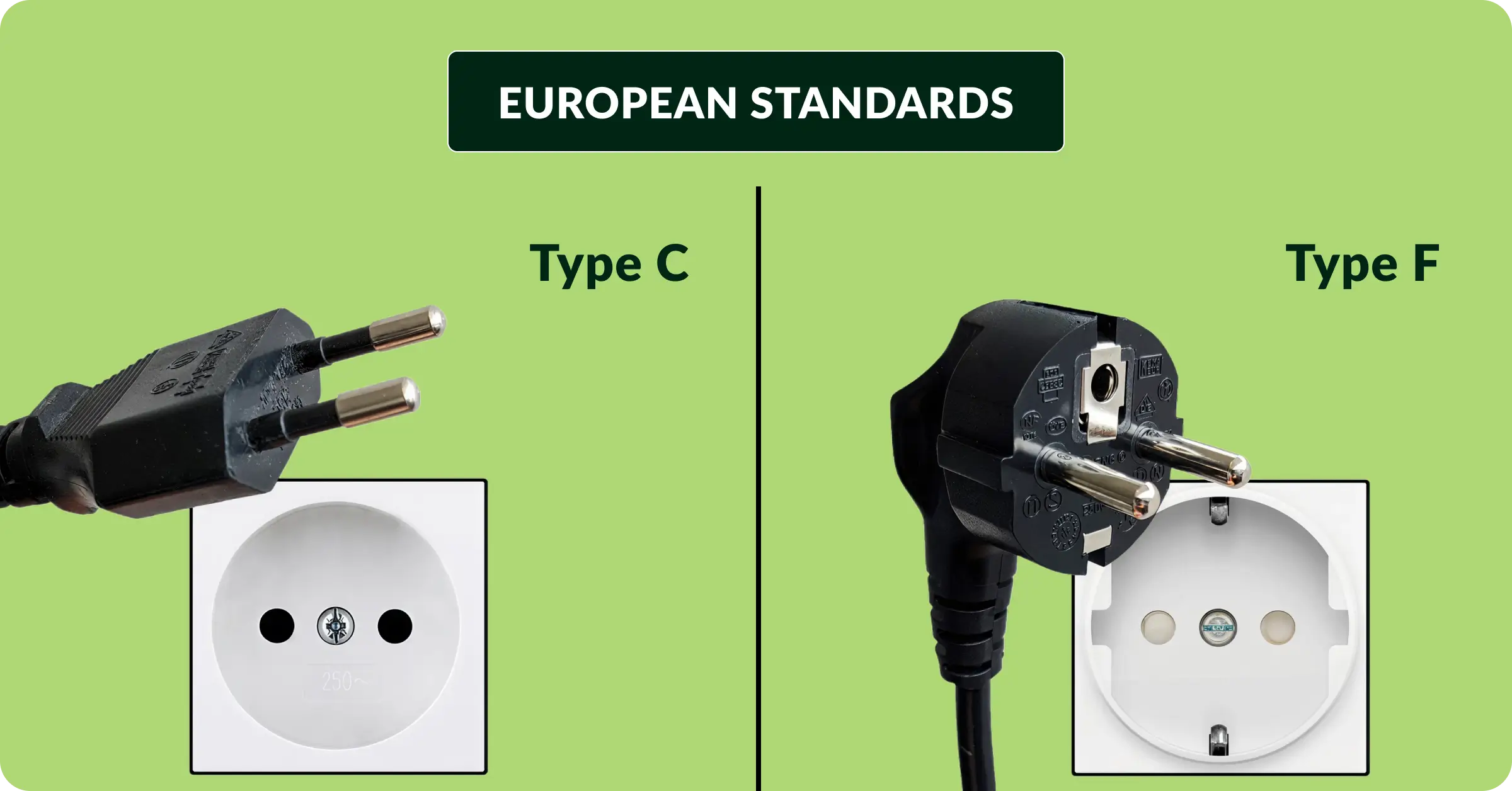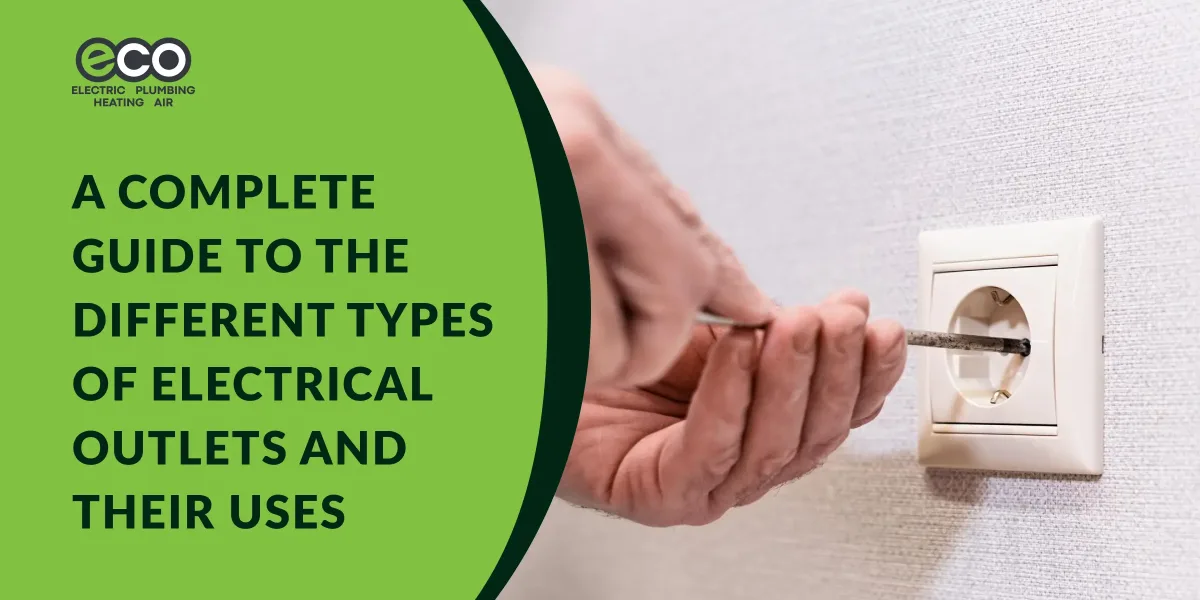Understanding the different types of electrical outlets in your home is essential for safety, functionality, and convenience. Whether you’re upgrading your outlets or simply curious about their various uses, this comprehensive guide will help you identify different outlet types, understand their functions, and know when to consider professional electrical services. From basic residential outlets to modern options like USB and smart outlets, this guide covers all you need to know about the outlets powering your home — and how making the right choices can help you avoid unnecessary outlet repairs and ensure long-term electrical safety
1. Common Electrical Outlet Types in American Homes
The electrical outlets found in homes throughout Seattle and across the United States come in various forms. Each is designed for specific purposes and adheres to safety standards to ensure the proper functioning of electrical devices.
1.1 Type A and Type B Outlets: The American Standard
The most common outlets in American homes are Type A and Type B. Type A outlets are ungrounded and feature two flat parallel pins. In contrast, Type B outlets include the same two flat pins but also add a round grounding pin for added safety. This grounding pin ensures the device is properly grounded before power is connected.
Type B outlets are standard in North American homes and are rated for 15 amps. They provide the 120-volt power commonly used in most household appliances and electronics.

2. GFCI Outlets: Protection in Wet Areas
GFCI (Ground Fault Circuit Interrupter) outlets provide essential safety in areas where water is present. These specialized outlets immediately cut power when a ground fault is detected, reducing the risk of electrical shocks. GFCI outlets are commonly found in areas such as:
- Bathrooms
- Kitchens (near sinks)
- Outdoor spaces
- Garages
- Basements
- Any location near a water source
What makes GFCI outlets unique is the “Test” and “Reset” buttons. These allow homeowners to test the functionality of the outlet and ensure it’s working correctly. Regular testing is crucial, and our professional electricians can verify that your GFCIs are functioning as expected during maintenance visits.
3. AFCI Outlets: Fire Prevention Technology
AFCI (Arc Fault Circuit Interrupter) outlets are another safety advancement designed to detect dangerous electrical arcs that could cause fires. When such an arc is detected, the outlet immediately shuts off the power, preventing potential fire hazards.
Modern electrical codes require AFCI protection in:
- Bedrooms
- Living rooms
- Dining rooms
- Recreational rooms
- Closets
AFCI outlets are required in certain areas of your home, and upgrading to these outlets can significantly reduce fire risks. Find out more about AFCI technology from NEMA.
4. Specialized Electrical Outlets for Modern Homes
As technology has evolved, so have the needs of homeowners. Modern homes require more than just the standard electrical outlets. Specialized outlets, such as USB outlets and smart outlets, have become increasingly popular.
USB Outlets: Convenient Charging Solutions
With the rise in the number of USB-powered devices such as smartphones and tablets, USB outlets have become an essential upgrade for many homeowners. These outlets combine standard Type B receptacles with built-in USB ports, making it easy to charge devices without the need for bulky adapters.
USB outlets are ideal for:
- Kitchens
- Bedrooms
- Home offices
- Living rooms
These outlets are a great option for those looking to modernize their electrical systems without major renovations.
5. Smart Outlets: Home Automation Integration
Smart outlets represent the latest in home electrical technology. These outlets allow you to control devices remotely through smartphone apps or integrate them into home automation systems like Alexa or Google Home. With smart outlets, you can schedule devices to turn on or off, monitor energy usage, and automate your home’s electrical system.
Smart outlets offer:
- Remote control capabilities
- Energy usage monitoring
- Integration with other smart home devices
- Improved energy efficiency
For homeowners adopting smart home technology, these outlets are an essential part of any modern electrical system.
6. International Electrical Outlet Standards
For Seattle residents who travel internationally or host guests from abroad, understanding global electrical outlet differences is important for device compatibility.
6.1 Type C and Type F: European Standards

Type C plugs, known as Europlugs, are used across much of Europe. They feature two round pins and are typically ungrounded. These plugs are designed for devices requiring 2.5 amps or less.
6.2 Type F:
plugs (Schuko plugs) include earthing clips on the sides for added safety and are used in countries like Germany, Austria, and Spain. They are rated for 16 amps.
Traveling to these regions? Be sure to bring the correct adapter for your devices.
6.3 Type G: United Kingdom Standard

The Type G electrical plug is used in the UK, Ireland, and several other countries. It features three rectangular blades arranged in a triangular pattern, with an incorporated fuse for added safety.
British outlets also include shutters that prevent foreign objects from being inserted, making this one of the safest plug systems in the world.
Travelers will need Type G adapters when visiting these regions.
7. Electrical Outlet Safety and Maintenance
Proper maintenance of your home’s electrical outlets is crucial for safety. Over time, home electrical outlets may show signs of wear and require professional attention. It’s important to understand when your outlets need attention and how to maintain them properly to prevent any risks.
Signs Your Outlets Need Professional Attention

Electrical outlets are typically reliable, but there are certain signs that indicate professional attention may be needed:
- Outlets that feel warm to the touch
- Discoloration or scorch marks
- Loose-fitting plugs that don’t stay in place
- Crackling or buzzing sounds
- Burning smells
- Circuit breakers tripping frequently
- Sparks when inserting or removing plugs
Ignoring these symptoms could lead to fire hazards, so it’s essential to have them inspected by a professional electrician. Regular electrical outlet maintenance can help prolong the life of your electrical system and ensure your home is safe.
8. Childproofing Electrical Outlets
For homes with young children, childproofing outlets is an essential safety step. There are several ways to make outlets safer, including:
- Plastic outlet covers
- Self-closing covers that shield openings automatically
- Tamper-resistant outlets with built-in shutters
Our electricians can help install the appropriate childproofing solutions in your home.
9. Upgrading Your Home’s Electrical Outlets
Homes built before the 1990s may have outdated electrical outlets that could benefit from an upgrade to improve safety and functionality. Electrical outlet upgrades not only improve the safety of your home, but also increase convenience and energy efficiency.
When to Consider Outlet Upgrades
Consider upgrading your home’s outlets if:
- You have ungrounded two-prong outlets
- You need more capacity for modern electronics
- Breakers are frequently tripping
- You want added safety features like GFCI or AFCI protection
- You’re renovating or modernizing your home
- You want to incorporate smart home technology
10. Professional Installation Ensures Safety
While DIY electrical projects might seem like a cost-saving solution, electrical outlet installation and replacement should always be handled by a certified professional. Improper installation can lead to:
- Electrical fires
- Shock risks
- Code violations
- Damage to devices
Our licensed electricians are here to provide safe and professional electrical outlet installation services throughout Seattle and the Puget Sound area.
11. Conclusion: Expert Electrical Outlet Services in Seattle
Understanding the different types of electrical outlets and their uses helps homeowners make informed decisions about their electrical systems. Whether you’re upgrading to GFCI or AFCI outlets, installing USB and smart outlets, or replacing outdated electrical outlets, professional installation ensures optimal safety and functionality.
At Eco Services WA, we provide expert electrical outlet installation and upgrade services throughout the Puget Sound region. Our certified electricians are here to help with all of your electrical needs, from basic repairs to advanced system upgrades.
Contact us today to schedule a professional evaluation and enhance your home’s electrical system
FAQ
1. What are the four types of electrical outlets?
The four main types of electrical outlets found in modern homes are Type A (two-prong), Type B (three-prong grounded), GFCI outlets for wet areas like bathrooms and kitchens, and AFCI outlets for fire protection in living spaces.
2. How do I know what type of outlet I have?
Look at the design: Type A has two vertical slots; Type B has a round ground pin. GFCI outlets have “Test” and “Reset” buttons, while AFCI outlets are labeled and typically installed in bedrooms or living rooms.
3. What are Type A or Type B electrical outlets?
Type A outlets are older, two-prong and ungrounded. Type B outlets include a ground pin, making them safer and standard for most U.S. homes. Type B is recommended for use with most household appliances.
4. How do I know if my outlet is 15 or 20 amp?
A 15-amp outlet has two vertical slots, while a 20-amp outlet has one vertical and one horizontal (T-shaped) slot. You can also check your circuit breaker or ask an electrician for confirmation.
5. When should I replace an electrical outlet?
Replace outlets if they feel hot, are discolored, spark, make noise, or have loose plug connections. These are signs of wear or damage that could lead to electrical hazards.


